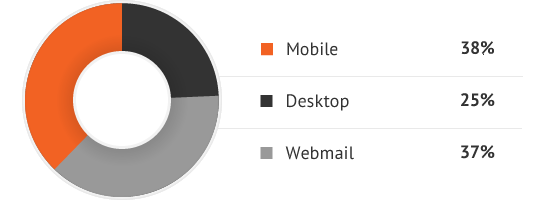Email Marketing (All)
Do Resorts Need to Invest in Responsive Email Design? My Take on a Very Popular Question.


BLANCHARD
Responsive was a hot topic when i asked Joe Myers and Brian Elliot to discuss the implications six months ago at Destination Summit. Today, it’s even hotter.
But rather than discussing templates or design best practices, let’s begin by asking ourselves three questions:
- Do I understand the specific constraints and rules regarding email HTML and responsive email HTML/CSS?
- Am I comfortable writing and editing raw email HTML/CSS?
- Doe I know how compatible my email marketing system is with responsive templates?
The questions are critical because the success of responsive email design, unlike its traditional web counterpart, depends mus more on you, the marketer than the designer/developer who builds it in the first place.
Prone to Breakage
That’s because if you use responsive templates, there is a 99% chance you will need to edit the HTML directly. And not just HTML, but email specific, responsive HTML and CSS which is completely different than it’s web-browser sibling.
If you are not confident in your abilities and try to add this month’s newsletter content, there is a good chance you will break the template.
Even more, many email marketing systems (WYSIWYGs specifically) were not designed for the tricks required to get responsive email to work. So if you don’t understand these limitations or special requirements, even an email coding ninja will break their template.
The False Dilemma from the Stats
The motivation to adopt this practice usually stems from how many emails are opened on mobile devices. Based on a Stash published yesterday, here’s the breakdown for resorts.
That mobile number is big. But keep two things in mind.
First, the vast (overwhelmingly vast) majority of emails your guests receive are NOT responsive. In other words, consumers at this point have little to no expectation of responsive email.
Second, responsive is one way, but not the only way, for an email to render well on both desktop and mobile and, thus, get the same value from each send.
So, what are those alternatives? Good question.
Reading and Clicking
Mobile email providers typically scale the contents down to match email width to software/screen width. Remember, non-responsive emails still work fine on mobile, nothing “breaks”, it’s simply a matter of text size (readability) and button size (clickability) on this smaller version that get rendered.
In that sense, designing for this change is fairly logical and simple.
Concept #1 – Narrower Emails
Instead of 600 or 750 pixels, bring it down to 500 pixels. This decreases the amount of scaling needed on small screens.
Concept #2 – Larger Text
When in doubt, larger text makes your email more readable on mobile and, if you’ve noticed the font size on successful media sites, more readable on desktop as well.
Concept #3 – Fingertip Friendly Links
Finally, make links a bit more clickable with a fingertip. Larger buttons and increased line-heights are common to desktop experiences and work great on mobile.
While all of these can be added after the fact, designing each into a template from the start is the best approach. If you’re asking about responsive, you’re probably close to that point already.
It’s Not About the Recipient
Let me wrap this up where I started. If you want to know whether to take the responsive email route, stop looking at recipient stats and, instead, start looking at your own skills and setup.
If you are confident in your email HTML/CSS ability and your email marketing provider has support it. Great. But chances are you’re in a small minority (especially on the coding skills required).
If you’re not? That’s fine. Most aren’t so don’t force it. The alternatives perform amazingly well and come without the headaches and wasted time of broken code.
About Gregg & SlopeFillers
I've had more first-time visitors lately, so adding a quick "about" section. I started SlopeFillers in 2010
with the simple goal of sharing great resort marketing strategies. Today I run marketing for resort ecommerce and CRM provider
Inntopia,
my home mountain is the lovely Nordic Valley,
and my favorite marketing campaign remains the Ski Utah TV show that sold me on skiing as a kid in the 90s.
Get the weekly digest.
New stories, ideas, and jobs delivered to your inbox every Friday morning.

